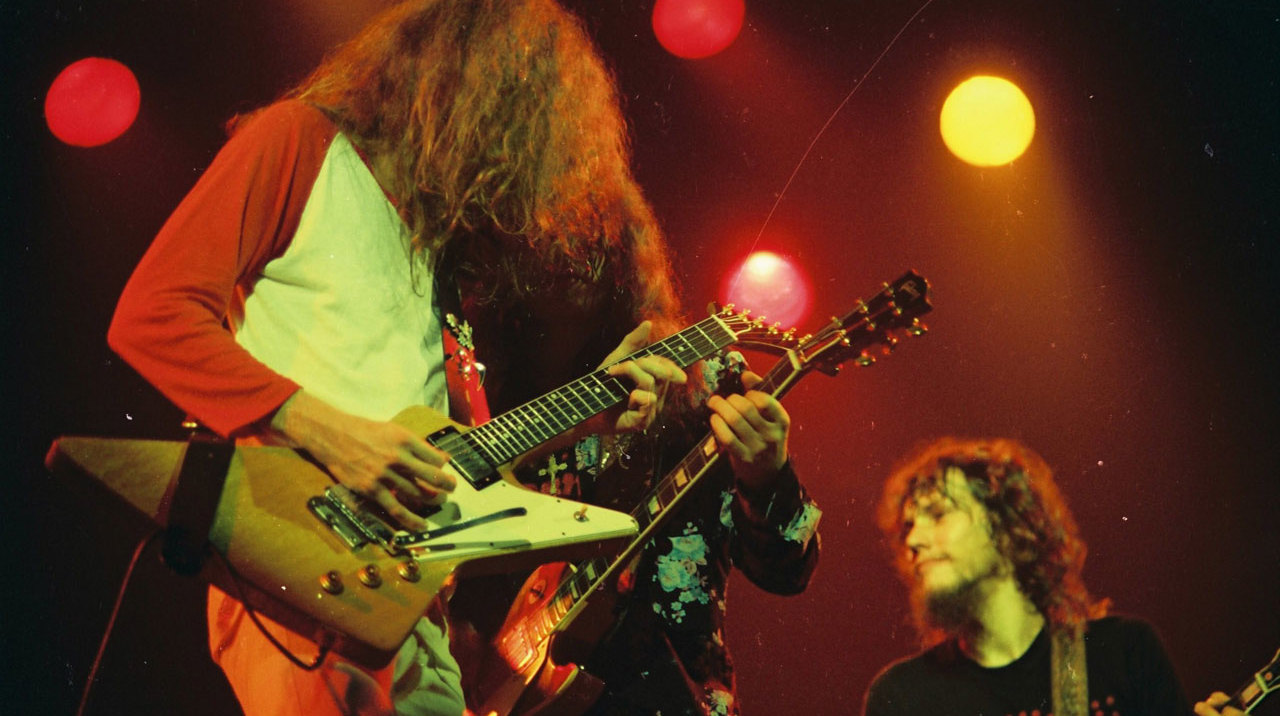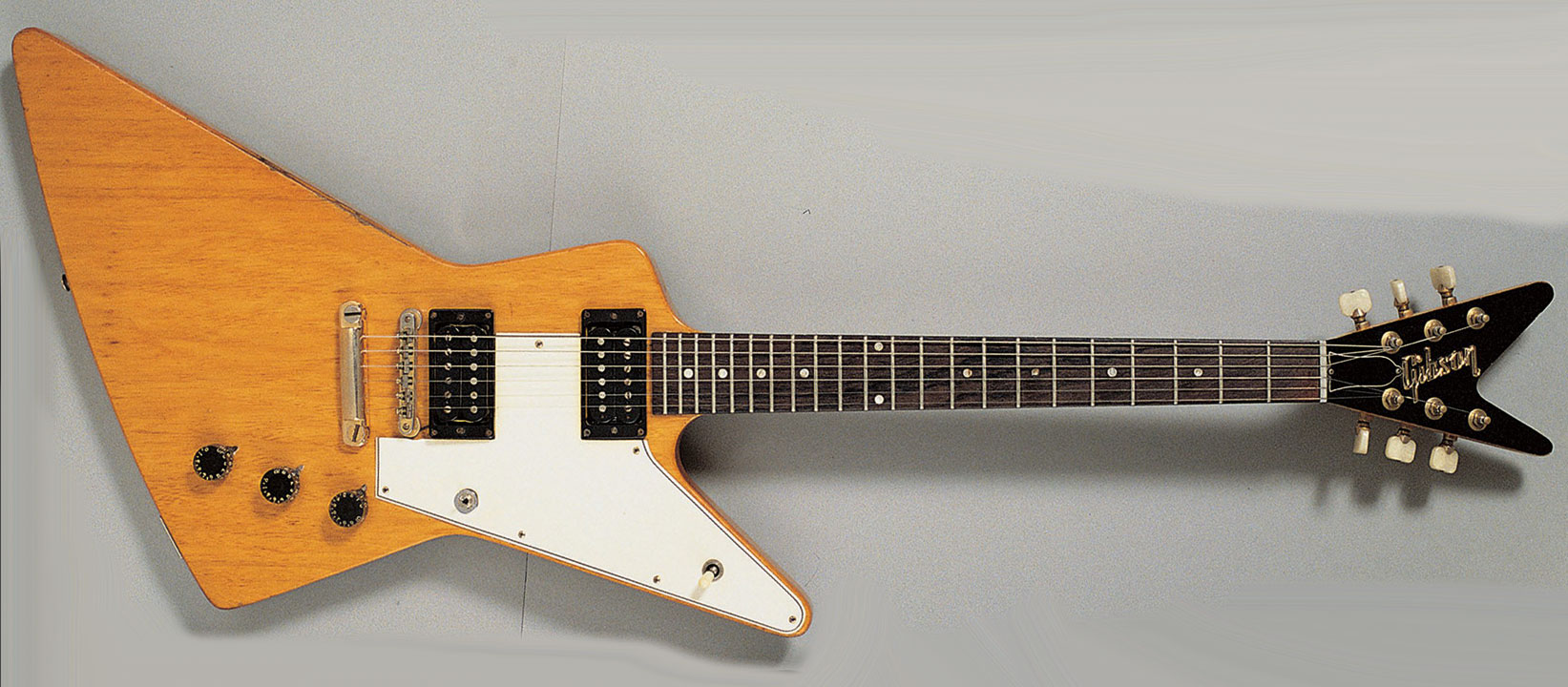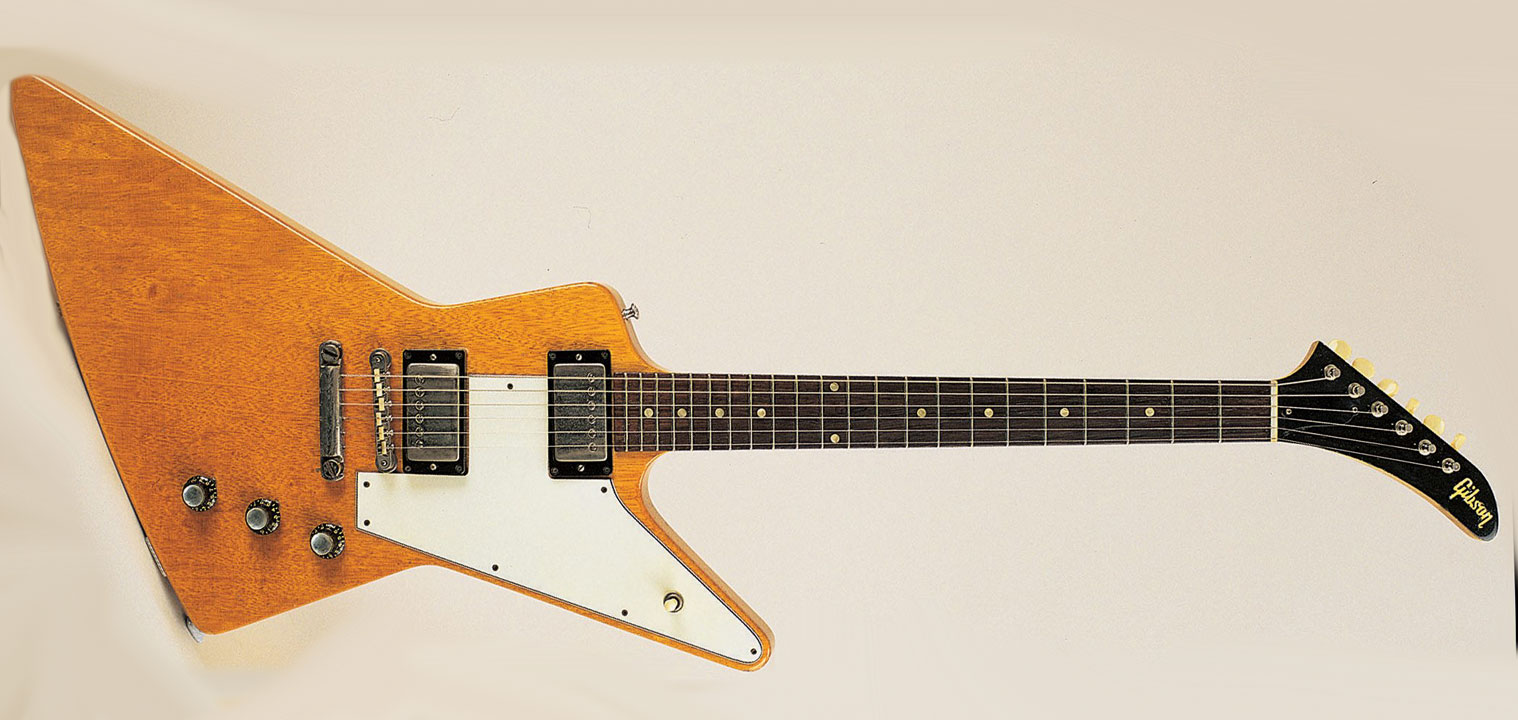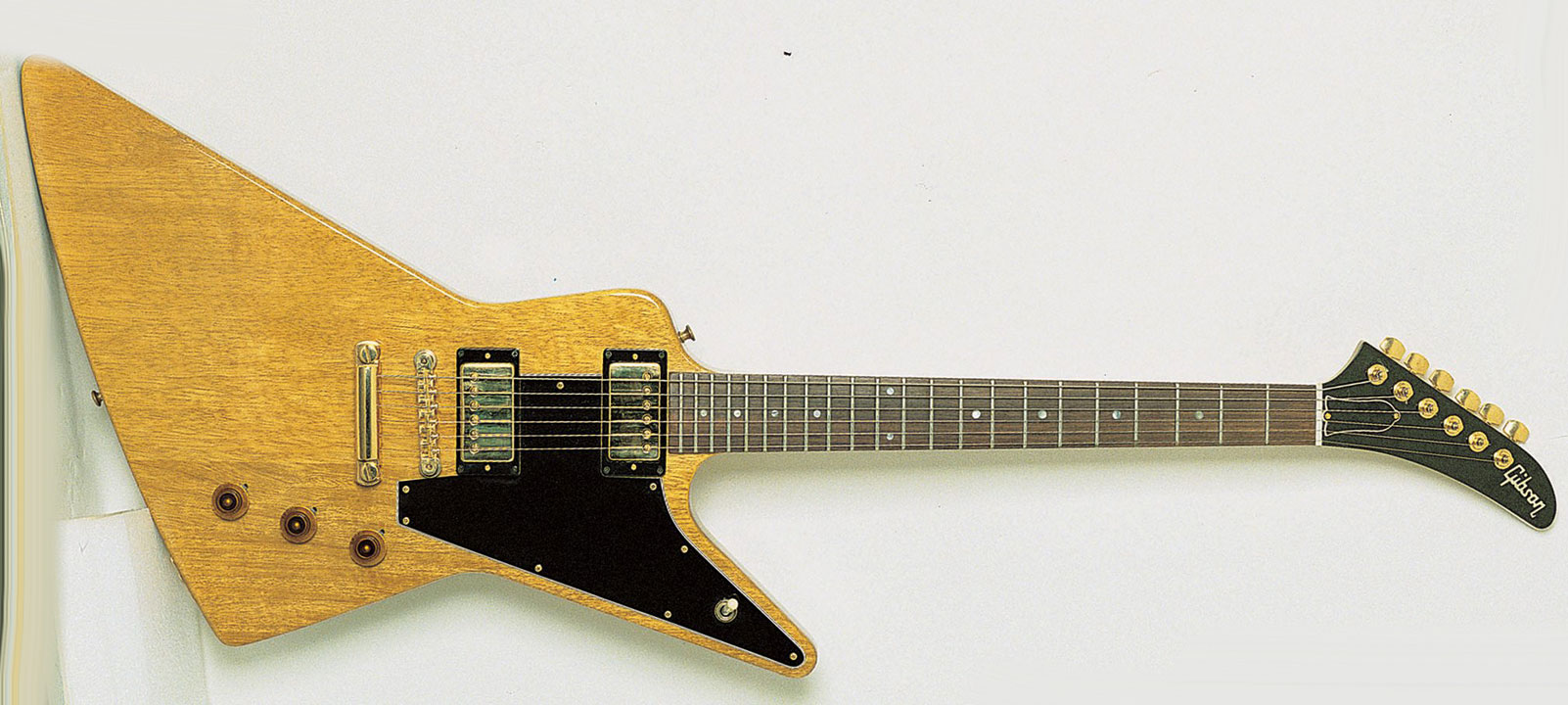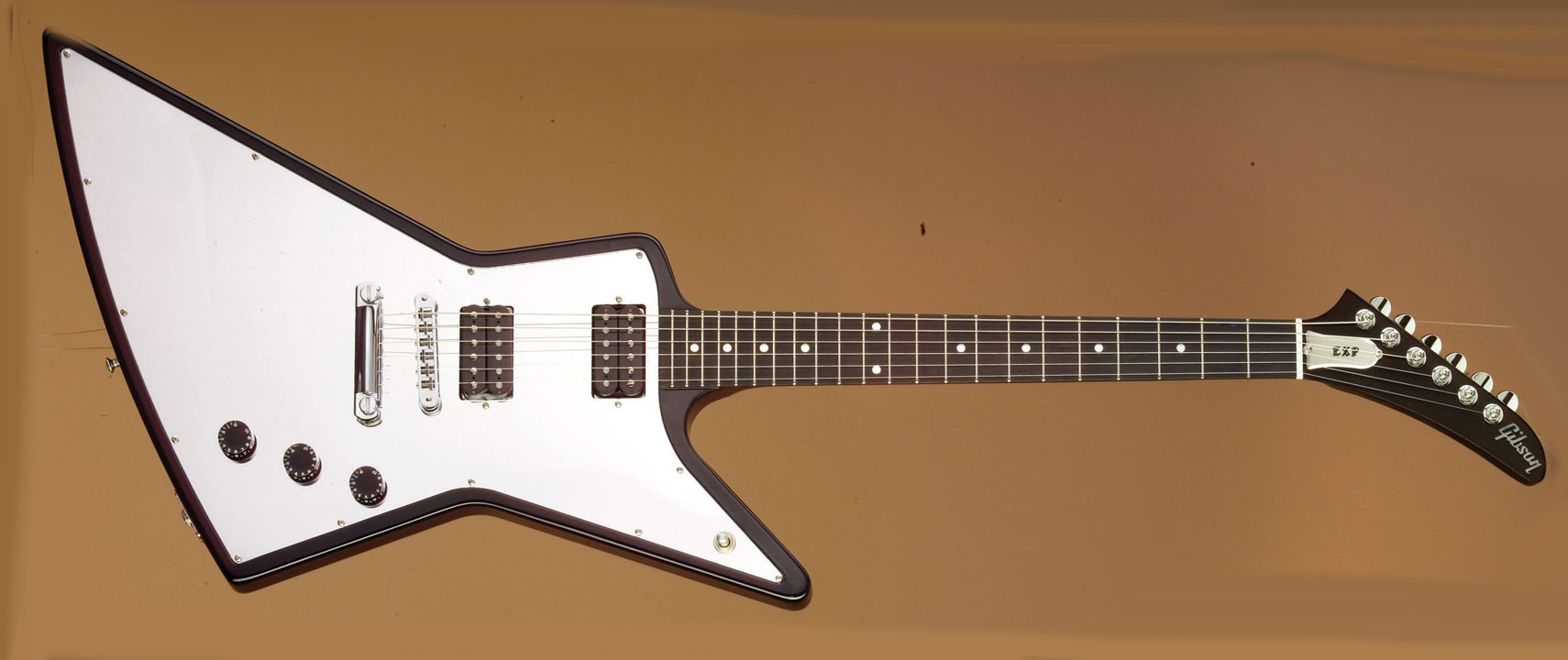These days a metal dream machine, the Gibson Explorer might as well have been dropped from a passing flying saucer when the first examples were released from the company’s factory in Kalamazoo, Michigan. What the hell were these guys thinking? This was 1958, the year rock’n’roll was losing its grip on the nation’s delinquents; Elvis was in the army and clean cut teen idols were being lined up to take his spot on bedroom walls.
Then Gibson go and design three of the most eye-popping guitars at a time when conservatism was at its most rampant. What’s hard to fathom is how the Flying V, Explorer and Moderne even made it beyond the drawing board in the first place. You could make a case that the V reflected the space race/sci-fi culture of the time, an aesthetic that influenced everything from Cadillac dashboards to the humble toaster. It looked like a rocket so, fair enough.
The Moderne was just too weird. A bit like the rear quarter panel of a Chevy, if you squint your eyes enough, this beast remains loved by virtually no one.
The Explorer then. It looks positively medieval, like some historical hairy bastard whittled it from a castle door. Conan The Barbarian would have loved smacking someone around the head with it and Metallica’s James Hetfield symbolically did the same thing when he fell for the Explorer’s brutal looks and sound in the 80s. To the Brycreemed guitar denizens of late 50s American however, the Explorer was the thing that should not be.
It’s worth remembering that Gibson were clutching at straws in ‘58. The Les Paul range was not pulling in the big bucks and they needed something to put arch-rival Fender’s gas at a peep at a time when the California brand was killing it with the Stratocaster, Telecaster and Precision Bass.
Gibson’s salvation would eventually come with the SG-bodied Les Paul reboots in the early 60s. By then, the public were a bit more receptive to radical designs.
Like its V-shaped brethren, the ‘58 Explorer was formed from a slab of Korina wood [aka African Limba], a hugely respected timber that always sets vintage collectors, and Woody Woodpecker’s, mouth watering. Aside from the body shape, the Explorer followed classic Gibson spec cues established by the Les Paul models. So, it had two P.A.F humbucking pickups, a tune-a-matic bridge/stop tailpiece setup to anchor the strings to the body (a few examples had Bigsby vibratos factory fitted), plus a glued in Korina neck with a rosewood fingerboard [with a 12” radius].
Although the model didn’t come in Junior, Special, Standard and Custom versions like the Les Paul, it did share the latter guitar’s gold hardware. Although a small number Explorers came with a V-shaped headstock the thing that set the guitar apart from other Gibson models was its stylish “hockey stick” shaped head. It would be a huge influence on 80s shred guitar brand Kramer who aped the Explorer’s headstock profile on their now classic “banana” shaped pointy bit.
With typical brilliance Gibson president Ted McCarty and his team had put together yet another outstanding tone machine but the quizzical looking elephant in the room was left asking “who is this thing actually for?”
That question wouldn’t be answered until the 1970s when a bunch of guitarists rediscovered the joy of the Explorer. The Edge cut a lot of early U2 material on a ‘76 Limited Edition model. He found what he was looking for while on holiday in New York City in 1978 and paid $248.40. The Edge recalled the purchase in a BBC interview: “I just picked it up in the store and it felt so great, this is it. I actually went in to buy, I think I was going to buy a Les Paul, but I just fell in love with this guitar. I brought it back and I was slightly like… it’s a little strange looking… are the guys in the band gonna look at it and go ‘what?’… there’s a few strange looks for the first day, but everyone just loved the sound of it. I think it became like a signature look, no one else was playing Explorers at that point...”
Actually… Lynyrd Skynyrd guitarist Allen Collins was already using his ’58 Korina Explorer by the mid-’70s. His guitar featured the Maestro vibrato found on 60s SGs and Firebirds. Unlike The Edge, who didn’t like the sound of his Explorer’s bass strings and concentrated his picking on the treble strings, Allen Collins work is a textbook example of the model’s fat tone and awesome sustain…
Fellow Explorer heads include Neil Young, Gary Moore, Foo Fighter Dave Grohl, Trivium’s Matt Heafy, early Leppard guitarist Pete Willis and Matthias Jabs of The Scorpions. In the late 80s, Jabs helped Gibson designed 24-fret Explorer 90, so called because its body was 90% the size of your classic Explorer.
Another modified Explorer owner was Eric Clapton who thought his misshaped ‘58 Korina model was a prototype. It wasn’t. The likely story is the guitar was damaged and chopped to remove the splintered bit. Eric was apparently gutted…
Of course, it was thrash metal beast James Hetfield who put the Explorer back in business in the 80s. He’s since used a bunch of Japanese brand ESP’s Explorer-like MX, JH-2 and Snakebyte model “tributes” but is best known for his white 1984 Gibson Explorer, the one with the “So What” sticker that would eventually by retrofitted with his favourite EMG 81⁄60 humbucker set.
He used the guitar to record Metallica’s 1984 epic Ride the Lightning. At that point it still had its factory Gibson pickups. Hetfield also pounded on a near identical white ‘84 backup Explorer, the “More Beer” sticker guitar. After he signed his deal with ESP in ‘88, Hetfield disguised both Explorers’ Gibson logos with more stickers… Around the recording of St Anger (2003), your man hooked up with another Gibson Explorer, a matt black example nicknamed “Rusty”.
The Explorer was officially retired by Gibson in 1963 although models shipped then we’re actually made in the 50s… the definition of old stock. Interestingly, the Explorer was only reinstated by Gibson in the mid-70s because US brand Hamer was doing a brisk trade with their splendid look-a-like Standard model.
Soon, other brands were pitching in, most famously Japanese brand Ibanez and its “Lawsuit Era” identikit Destroyer guitar - still going strong, albeit in tweaked form. The most infamous example of this doppelgänger was the ‘75 Destroyer Eddie Van Halen used on the first VH album. Eddie loved the guitar’s fat tone but later fucked it up by carving an extra cutout in its body with a chainsaw. Shame, as that guitar - the now famous “Shark” model - is one of the foundation stones of his classic 70s sound.
- The Guitars That Built Rock: The Fender Stratocaster
- The Guitars That Built Rock: The Jackson Randy Rhoads
- The Guitars That Built Rock: The Rickenbacker 330
- The Guitars That Built Rock: The Gibson Firebird
Rounding things up then. The Gibson Explorer started as an experiment, was received as a joke, yet is now considered, along with the Flying V, as one of the ultimate metal planks. An original ‘58 will cost you both arms and legs. It pumps out spectacular meaty tone and, let’s be honest, looks the absolute balls. No longer the thing that should not be, then. It’s the guitar every metal head wants in their arsenal. Here’s another clip to drive the point home…
